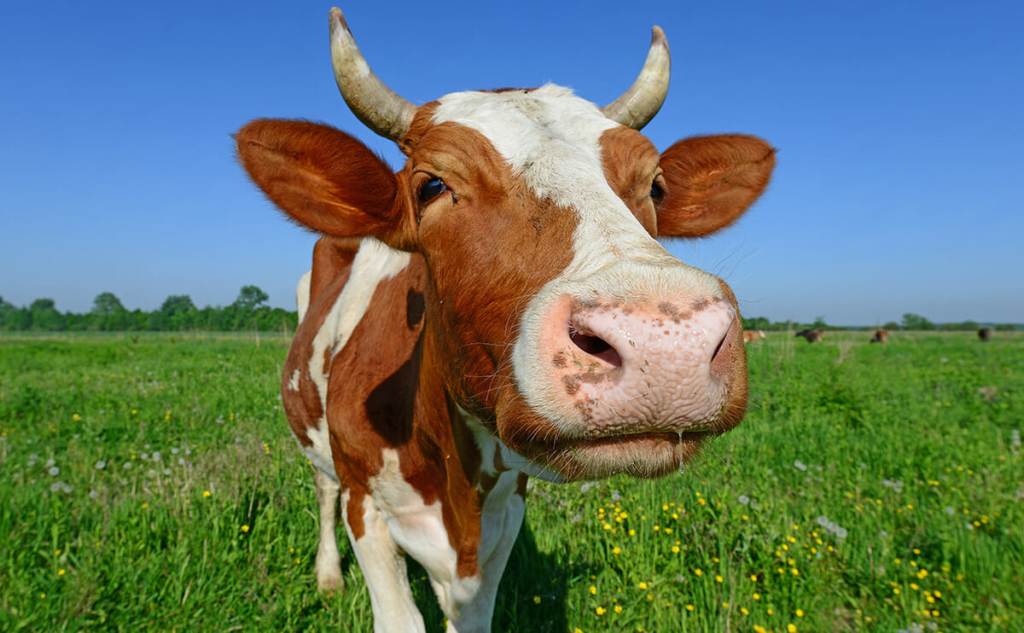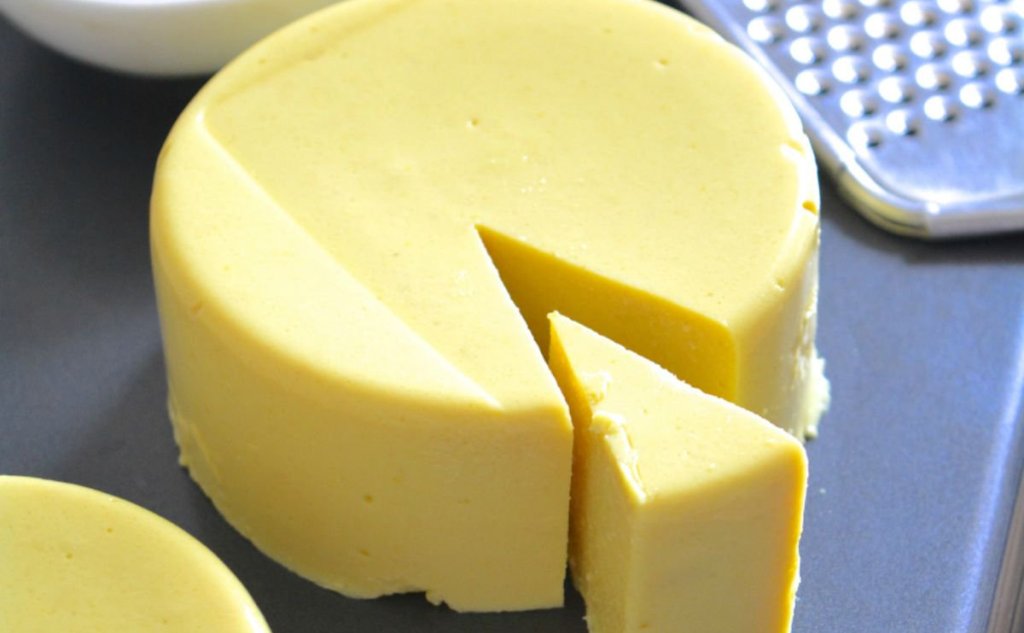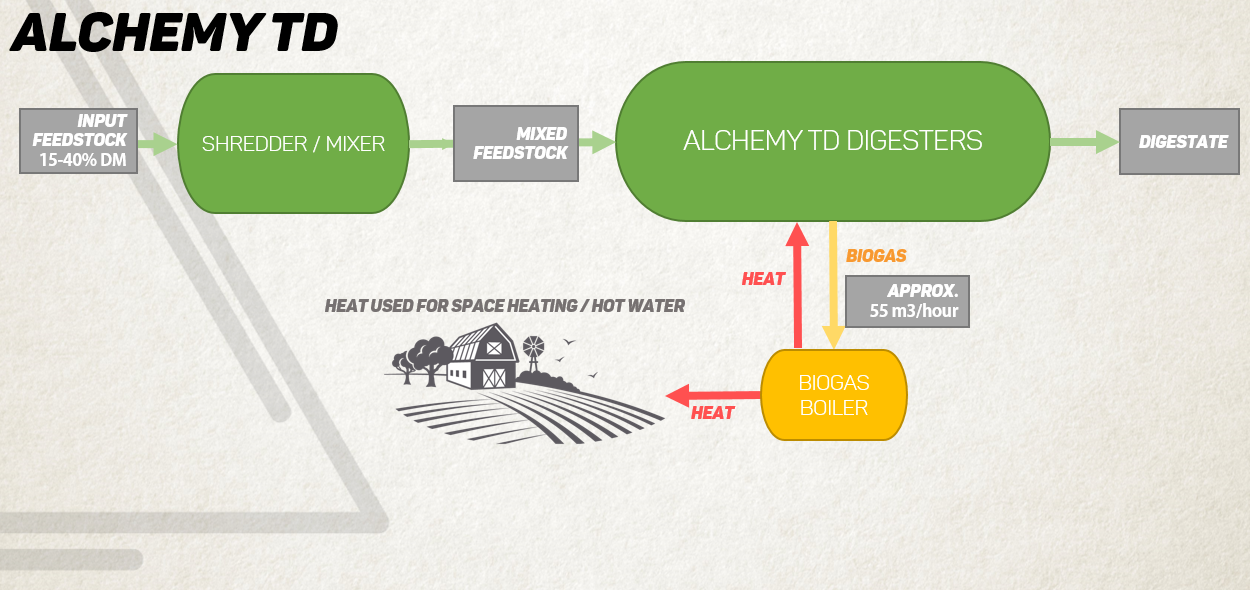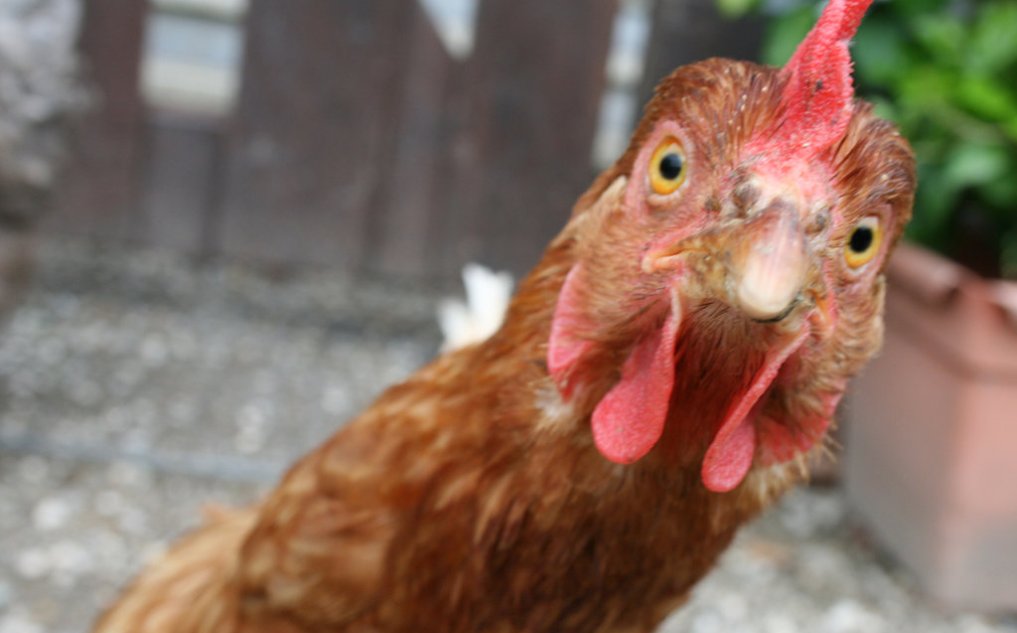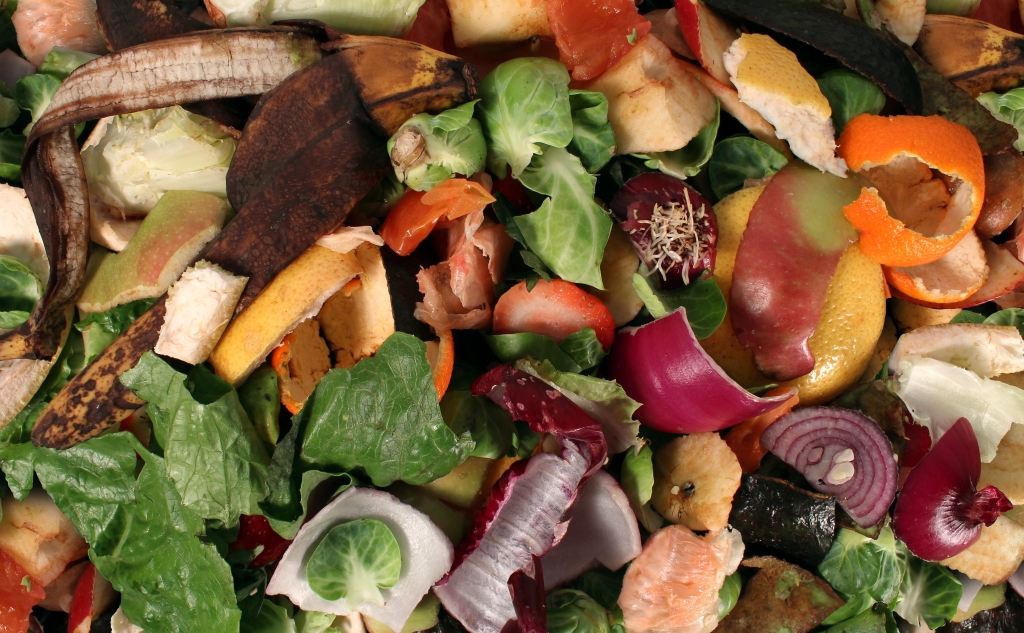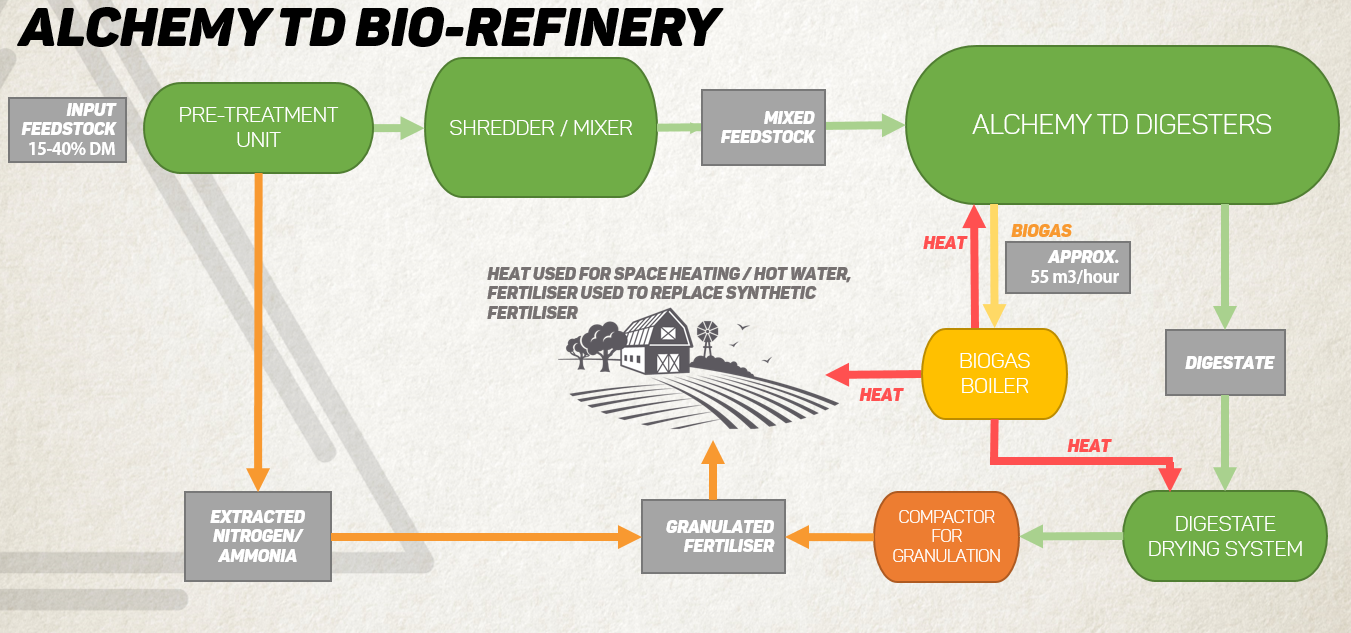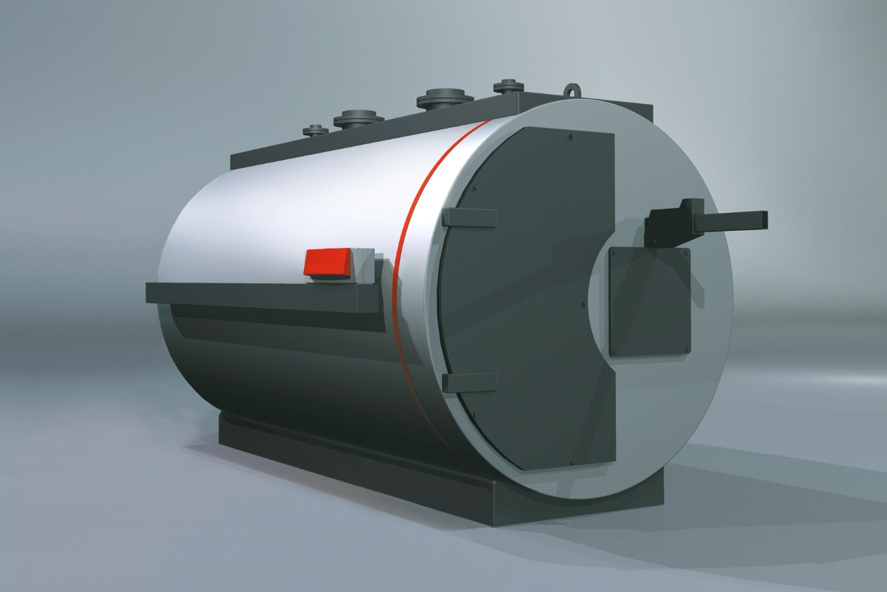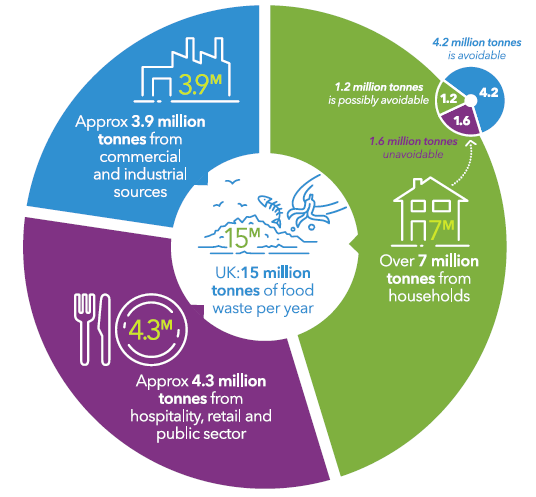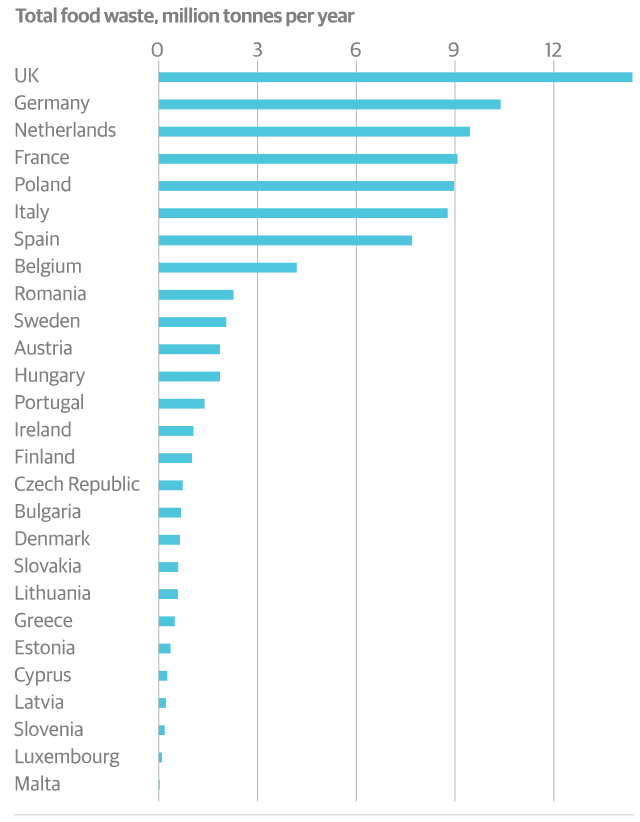
The Next Generation of AD
Higher Gas Output
Bagged Organic Dry Fertiliser
Small Footprint
Continuous Biogas Production
The Alchemy TD systems:
Alchemy TD
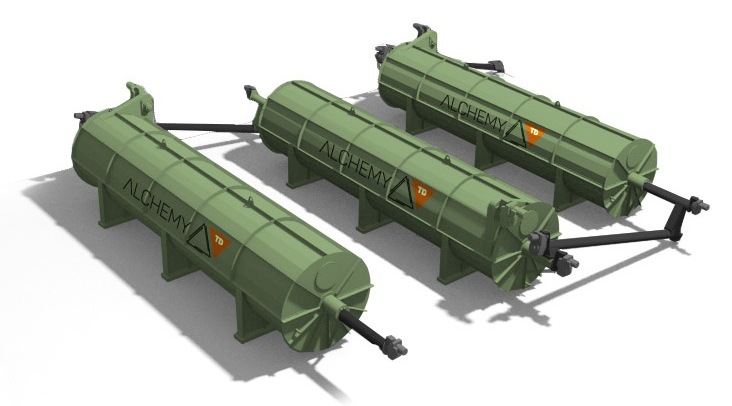
Alchemy TD Bio-Refinery
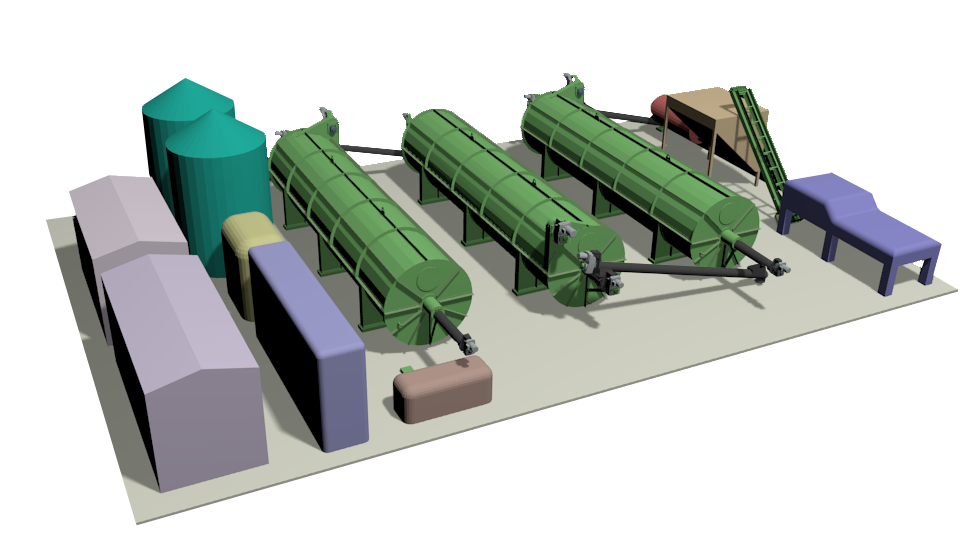
- Product Status: Complete and Available 100%
The Alchemy Thermophilic Digester (TD) is a revolutionary biogas system that uses a next generation dry digestion process, improving the energy efficiency typically associated with traditional Anaerobic Digestion (AD) systems. The system is a modular and scalable solution for efficient conversion of organic wastes into biogas. Taking the advantages of both Thermophilic reactors and dry digestion processes the Alchemy TD is streaks ahead of anything currently available. The Alchemy TD system is able to run on a wide range of organic feedstocks.
The high quality gas produced can be utilised in a number of ways from heat only application to Combined Heat and Power (CHP).
- Product Status: Final Testing and Commercialisation 80%
The Alchemy (TD) Bio-Refinery is the next stage development of the Alchemy TD reactor only system. Using an innovative pre-treatment system for ammonia removal it means the Alchemy TD system can then process more aggressive feedstocks that would otherwise be avoided. In addition to the pre-treatment system the bio-refinery will be able to convert a high quality digestate material into high grade granulated fertiliser.
As with the standard Alchemy TD systme the high quality gas produced can be utilised in a number of ways from heat only application to Combined Heat and Power (CHP).
What can the biogas be used for?
Depending on your location there is also potentially the additional benefit of both heat and power incentives from the government. Please see the table below to find out more:
| Incentive Scheme | Feed in Tariff (FIT) | Feed in Tariff (FIT) Export Rate | Renewable Heat Incentive (RHI) |
| Tariff Type | Anaerobic Digestion (<250kW) | Anaerobic Digestion (<250kW) | Biogas Combustion |
| Tariff Value | 6.19 p/kWh | 5.03 p/kWh | 4.43 p/kWh |
The incentive rates above are an interpretation of the information from the Feed In Tariff, Renewables Obligation and Renewable Heat Incentive Guidance Documents and should only be used as guidance and should not be considered a guarantee.
| Incentive Scheme | Feed in Tariff (FIT) | Export Rate | Support Scheme for Renewable Heat Incentive (SSRH) |
| Tariff Type | Anaerobic Digestion (<500kW) | Wholesale price | AD Heating Systems |
| Tariff Value | TBC | average €60/MWh | 2.95 c/kWh |
The incentive rates above are an interpretation of the information from the Feed In Tariff, Renewables Obligation and Renewable Heat Incentive Guidance Documents and should only be used as guidance and should not be considered a guarantee.
Please contact our sales team who will be able to advise more on other tariffs that may be applicable.
Email: sales@nomailinuse.alchemyutilities.ie
Key Product Features and Benefits
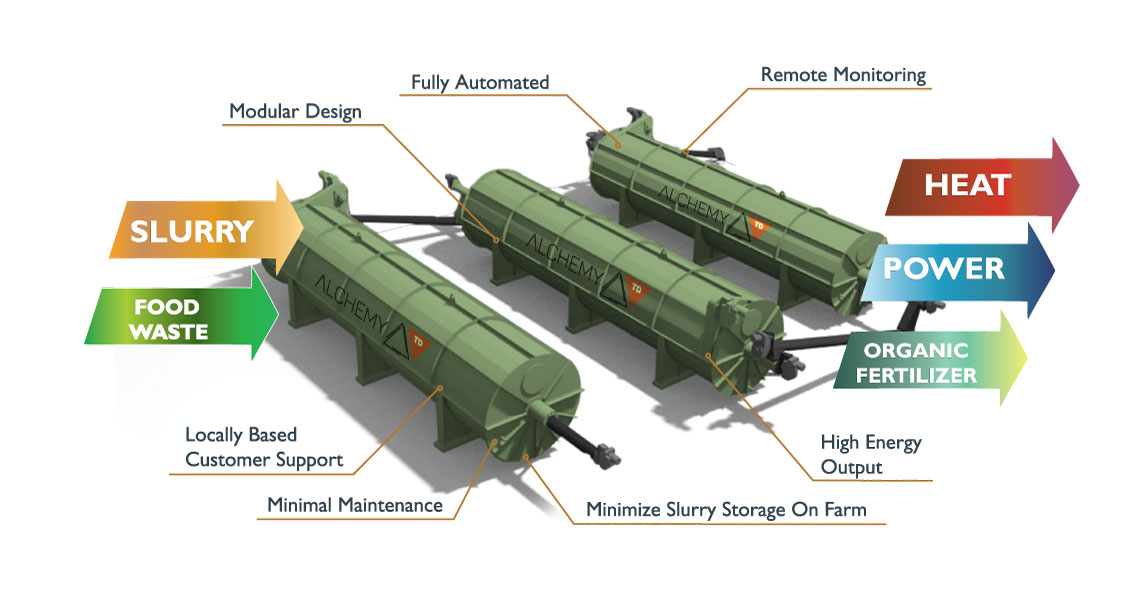
The benefit of this dry digestion process is the use of only a small amount of water. This is achieved by using specially designed double walled digesters. The inner cylinder holds and moves the digesting organic material (40% dry matter) whilst the outer cylinder helps maintain the working temperature of the thermophilic process by providing a water bed in a closed circuit vastly reducing the need for water, the need to heat a substantial amount of water in order to achieve the thermophilic temperatures and the power requirement to turn the inner cylinder. Furthermore, this also means that the digestate isn’t diluted providing a more valuable end product.
Using the dry digestion we are able to reduce the amount of heat energy needed by approximately 33%. By operating at thermophilic temperatures the Alchemy TD has the potential to produce 10% more gas at a higher methane concentration than regular AD systems. Combining the benefits of dry digestion and thermophilic process the Alchemy TD is by far the most advanced digestive system in the market significantly out performing AD plants and others alike.
The biogas that has been produced can be used for either combined heat and power production (CHP) or simply burned to produce around 250 kW of heat. The digestate left at the end of the process can be used as an organic fertiliser or soil conditioner.
Organic digestion is not a new technology, and has been widely applied in the UK for the treatment of sewage sludge for over 100 years. However, until quite recently it has not been used here for treating waste and creating such a high value product. From just 4.7 tonnes a day feedstock the system is capable of producing 100 kw of heat 100kW of electricity and 1.7 tonnes of pelletized fertilizer. (the system is still in development however early test on cow manure and food waste suggest that these figures will be easily achievable)
Benefits over traditional Anaerobic Digestion (AD):
|
|
|
TRADITIONAL ANAEROBIC DIGESTION |
ADVANTAGES OF ALCHEMY TD |
| Footprint | 25m x 25m | Larger footprint needed for digester typically 5,000 sq m, digestate treatment, pasteurization and feed stock storage | Designed for application to small-medium sized farms with much lower space impact |
| Feedstock Input |
A range of feedstocks (20%-40% dry mater) Pure Slurry/Pure Food Waste/ Mix of Slurry / Chicken Litter / Food waste |
46 tonnes of pure slurry a day required to achieve similar electrical output.* | Feedstocks that normally attract a gate fee utilised therefore fuel costs are zero or negative; no need for energy crops; and aggressive fuels, such as 100% chicken waste, can be utilised |
| Start-up | 1 – 2 weeks | 4 – 5 weeks | Quicker to realise returns from installation |
| Gas Production |
Higher methane concentration | 10-15% less methane gas produced | Greater gas output for similar fuel input |
| Digestate Output | 1.7 tonnes per day of dry organic fertiliser easier to spread and store | Wet digestate can be messy to store and handle | Production of nitrogen rich organic fertiliser has high market value circa £170K/yr – extraction of nitrogen from feedstock has huge financial and carbon reduction benefits (£400/tonne) |
| Heat & Electricity Production (via CHP engine) | Innovative thermophilic dry digestion process requires significantly less energy | Large proportion of valuable energy (heat & power) required to operate digestion process | Larger amount of valuable energy available for use or sale and eligibility for government incentives (RHI and FIT) |
*Figure from report published by IEA Bioenergy on small scale AD systems
Creating Revenue from Waste
‘Muck to Money!’
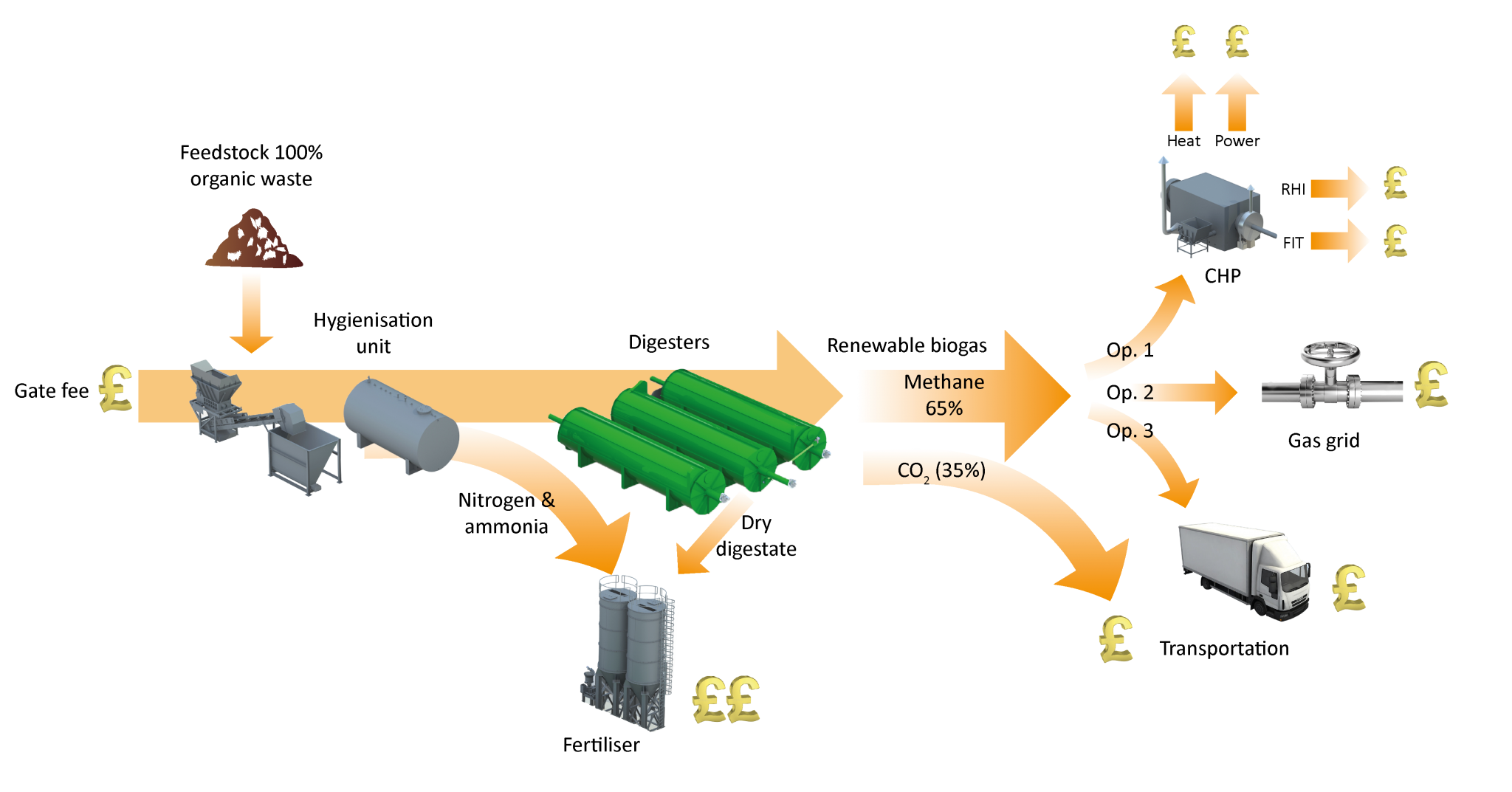

Frequently Asked Questions (FAQ)
What Feedstocks can be used in the Alchemy TD?
The Alchemy TD can take a wide range of organic wastes in it’s novel digestion process, including chicken/poultry manure, cattle slurry, pig slurry, farm yard manure, silage, maize, straw, hay and rushes. The quantity of feedstock material required will vary between wastes but the efficient digestion process means that less material is required for quality gas production. Please contact us to discuss specific waste inputs.
What volume of feedstocks can be used?
Depending on the dry matter percentage (DM) and the type of feedstock, the Alchemy TD system is capable of processing 5 ton to 10 ton of organic material per day.
Can a mix of feedstocks be used and how?
Yes, a mix of feedstocks can be used but a certain mix has to be specific for each site. See examples below:
A farm in Monaghan with poultry and cattle can use a mix of both poultry manure and cattle slurry but the percentage of each feedstock has to be the same for the bacteria to maximize the highest yield of gas.
A farm in Leitrim will have cattle slurry and perhaps bales of rushes available. This could be the type of feedstock to be used in that part of Ireland.
A farm in the midlands and south of Ireland could have access to multiple feedstocks from intensive pig, dairy and beef farms along with straw from the tillage sector.
Along with ‘On Farm’ solutions we can also cater for bio wastes in the diary processing sector and process organic waste from the Brown Bin collection.
What yield of biogas can the Alchemy TD produce?
Depending on the feedstocks used the Alchemy TD system can produce anywhere from 50 to 100m3 of biogas per hour.
Can a Combined Heat and Power (CHP) system be installed alongside the Alchemy TD?
Yes, our system is capable of running a 100 kW Combined Heat and Power (CHP) system. This particularly useful where there is a constant heat load on poultry and pig farm units.
The Alchemy TD can be set up to suit a range of different scenarios and the energy outputs depend on the system configuration. The system can be set up for CHP, gas only production for use in a biogas boiler or upgrade to biomethane and grid injection. There are lots of different combinations available and it can be tailored to suit the site specific requirements.
Does the Alchemy TD biogas qualify for the SSRH (Support Scheme for Renewable Heat)?
The Alchemy TD can qualify for the SSRH (Support Scheme for Renewable Heat) once the Biogas produced is used to displace heat from conventional fossil fuel sources. The Alchemy TD is an ideal size to maximize the tariff from the SSRH for heat from Biogas.
Can the digestate be spread on agricultural land of all types including grassland?
Yes, the Alchemy TD has a pre-treatment system that pasturises the feedstocks at over 80 degrees Celsius for an hour. This makes I suitable for spreading on all land types.
Is there any nutrient loss in the feedstocks after it has been converted into digestate?
No, if cattle, pig or poultry manure etc is used it will still have the same NPK value. The pre-treatment system extracts the nitrogen from the feedstock at the front end. However this can be incorporated back into the digestate so there is no loss of Nitrogen.
What is the DM% and NPK value of the digestate?
The DM of the digestate is typically between 20 and 40%. As the digestate is drier than slurry and digestate from a Wet AD system it can be spread with a muck spreader and makes storage easier. If the digestate is spread on land it can act as soil conditioner along with reducing the need for chemical fertiliser.
The NPK value of the digestate varies depending on the feedstocks. Poultry litter is higher in NPK than cattle slurry. However Alchemy test the digestate to optimise a farmers Nutrient Management Plan to comply with all nitrates regulations.
How much water can the pre-treatment system extract from slurry?
The pre-treatment system can extract approximately 3 ton of water from a 9 ton (2000 gallons) load of cattle slurry
What is the size of an Alchemy TD system?
Complete system fits into approx. 25m x 25m Footprint. (Including: Pre-Treatment, Digester units, Seperator, CHP system, Gas Processing, Pelleting / Granulating Plant)
Our Solution to the Waste problem:
In the UK 15 million tonnes of post farm food waste is created every year. Half of this waste is produced from households, the other half is generated from the manufacturing, retail and hospitality sector. However there is Evidence that one third of this could be avoided. The production, distribution and disposal of this avoidable waste amounts to a large proportion of the UKs annual greenhouse gas emissions (GHG) 3% in total. This amounts to approximately 20 million tonnes of CO2 associated with avoidable food waste per year.
Along with food waste manure and slurries waste stored within the UK amount to approximately 90 million tonnes per year. Not only does this require large structures that take up a lot of space on the farmyard, such as lagoons and silos, it can contribute to environmental factors such as contamination of surface water through leeching, and possible secretion of a bad odour.
There is potential for this slurry to be spread on the farmland as a natural fertilizer however this again has issues of its own. One concern is the possibility of spreading too much slurry, this in turn could potentially kill off earthworms, which are a major part of the echo system when it comes to breaking down dead matter, secondly if slurry was to be spread before heavy rainfall there is a chance that the increase in minerals such as nitrogen and phosphorous may impact local water sources, due to surface runoff. Furthermore the “nitrate vulnerable zone regulations” stipulate that many organic manures cannot be spread through certain times of the year contributing to an already growing surplus that takes up a lot of space and can be costly to store correctly.
The Alchemy TD system is the perfect solution to this growing problem in the UK and abroad. Being able to take a wide range of organic waste streams to produce energy locally, it could significantly reduce the amount of food waste that goes to landfill and agricultural organic waste stored on site. Furthermore, the generation of electricity local to the point of use means that inefficient power plants are less in demand and transmission losses are brought to an absolute minimum.
Contact us for more information


